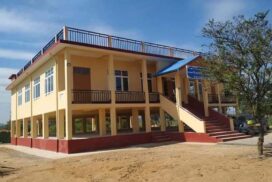Natural disasters have historically devastated regions worldwide, causing significant destruction and loss of biodiversity. Countries globally, including Myanmar, are not immune to the impacts of phenomena such as El Niño and La Niña. With global warming exacerbating these effects, the current global average temperature continues to rise compared to the period from 1850 to 1900.
Since May 2023, El Niño has significantly affected many countries. It intensified to a moderate level by July and August and peaked as a major event from September 2023 to February 2024. According to the World Weather Watch, a weaker phase is expected to persist until May 2024, with a return to normal conditions anticipated between June and October this year.
In 2023, the severe impacts of El Niño included intense storms, stronger winds, depression, high-magnitude earthquakes, heavy rains, floods, rapid ice shelf melting, heavy snowfall, and the extremely severe cyclonic storm Mocha, which struck Myanmar on 14 May 2023. In response, the government and local authorities are engaged in rehabilitation and reconstruction efforts, particularly in Rakhine State.
The summer of 2024 is expected to bring extreme weather conditions globally, with Myanmar’s townships like Chauk, Magway, Minbu, and NyaungU ranking among the world’s hottest cities. According to Myanmar’s Department of Meteorology and Hydrology, around 30 weather stations conducted 50 temperature measurements until mid-May 2024, recording new high temperatures. These extreme conditions have led to the formation of cumulonimbus clouds and downbursts, disrupting flights in certain regions.
As the monsoon season approaches, both authorities and residents must take proactive measures to mitigate the impact of potential natural disasters. Preparedness is crucial, and this involves several key steps. In this regard, authorities should prepare cyclone shelt ers to accommodate affected populations. These shelters must be equipped with essential supplies to ensure safety and comfort during and after the disaster. Basic construction materials and electronic equipment should be stockpiled. These supplies will be vital for the prompt rehabilitation of disaster-stricken areas. Ensuring an adequate supply of food and water for people in disaster-prone areas is essential. Proper storage and distribution plans should be in place to prevent shortages during emergencies.
By taking the steps mentioned earlier, people from communities can better withstand the impacts and challenges of natural disasters and recover more quickly. Preparedness, resource allocation, and efficient response mechanisms are critical to minimizing the loss and damage of public property and ensuring the safety and well-being of affected populations.
Defy natural disasters with supplies and shelters
- May 27, 2024
- 107















